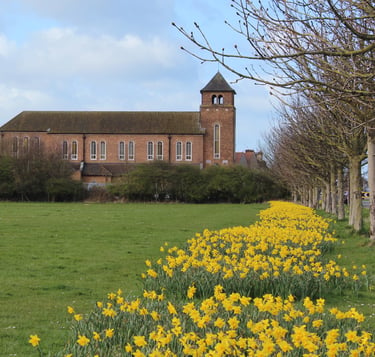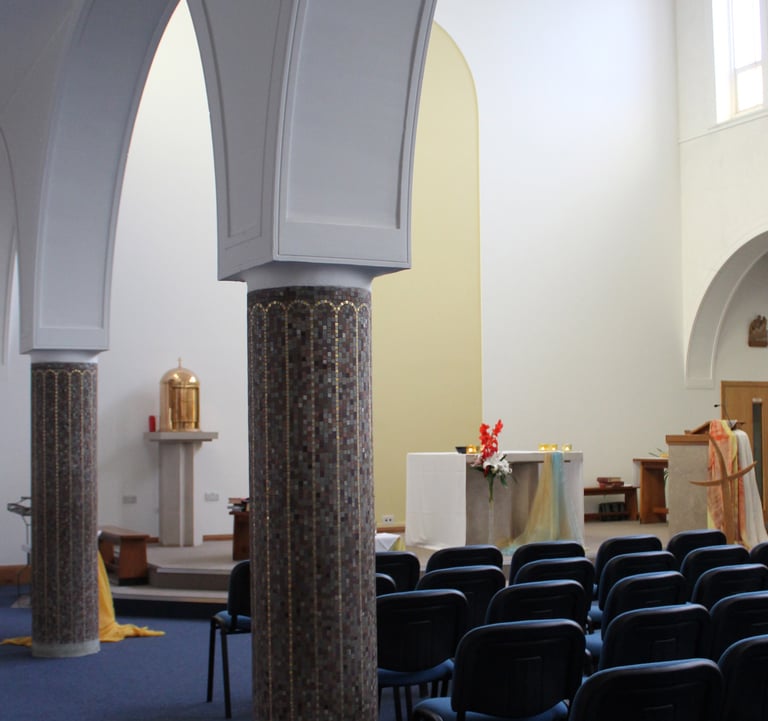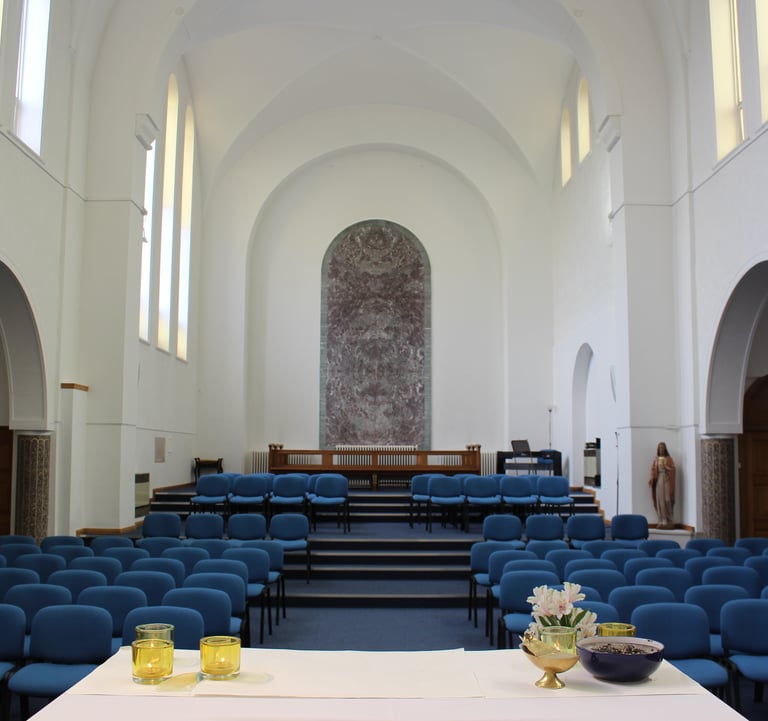Sacred Heart, Moreton
The Cross Moreton, CH46 9QB
“New £63,000 church - A great day for Moreton”
It was a great day for the Roman Catholics of Moreton, Wirral, when their beautiful new £63,000 church was blessed by the Bishop of Shrewsbury, Dr John A Murphy. It was, said the Bishop, a day of great rejoicing because they had surmounted tremendous difficulties and overcome them.
He recalled the days 40 years ago, when Moreton was a bungalow and caravan town.
There were few Catholics in Moreton in the days when it was a quiet Cheshire village. Then the place consisted of two or three farms, cottages and an inn or two. Moreton was at that time part of the parish of St Joseph’s Upton.
One of the Parish Priests, Canon Dallow, acted as chaplain for various school camps that were held by the shore in the summer months each year in connection with Fr Berry’s Homes Camp. He was succeeded by Fr O’Connor.
The beginning of Moreton as a separate parish is closely associated with these school camps. Through them, Catholics had the opportunity of attending Mass only during the months of June, July and August. For the remainder of the year they had to make their way to Upton where they were provided with hot drinks to sustain them on the journey home.
After the First World War, Moreton developed rapidly. It became an all-year-round camp for those who couldn’t obtain houses elsewhere.
Bungalows, caravans, tents, disused tramcars and buses appeared everywhere as homes between the railway and the shore. Among these dwellers was a high percentage of Roman Catholics and, in 1921, Provost Barry, of Our Lady’s Birkenhead, sought to establish a permanent Mass centre and a wooden hut belonging to a cafe was pressed into use.
This arrangement continued until land was obtained in Upton Road and a temporary church erected and opened in 1923.
The little church, designed by Bishop Singleton and built for £1,200 was dedicated to the Sacred Heart and has served Moreton as its parish church until the present day.
The First Parish Priest, Fr Griffin, was appointed in 1924. For several years he served on Wallasey Council and an avenue is named after him.
When Moreton became part of Wallasey in 1928, the ramshackle dwellings that had earned Moreton the name “Bungalow Town” were swept away and new housing estates were built.
It fell to Fr Gerard, who succeeded Canon Griffin, to provide the now large Catholic community with a school.
The tremendous leap in the Catholic population of Moreton, from a handful to 2,000, meant that the little, temporary church in Upton Road, became too small for the needs of the parish.
In recent years, to accommodate increasing congregations, it has been necessary to hold Masses in the church and also in the schools.
It became a matter of anxiety to find a site for a new church. Most unexpectedly the site near Moreton Cross known locally as Smith’s Farm was secured in 1949.
Extracts from the Evening News, Thursday 27 June 1957
In the early part of 2000s the Diocese released money to allow the Sacred Heart Church to be refurbished.
David Ireland, the Diocesan Architect, undertook a sensitive re-ordering of the building to provide a liturgical space for twenty first century worship.
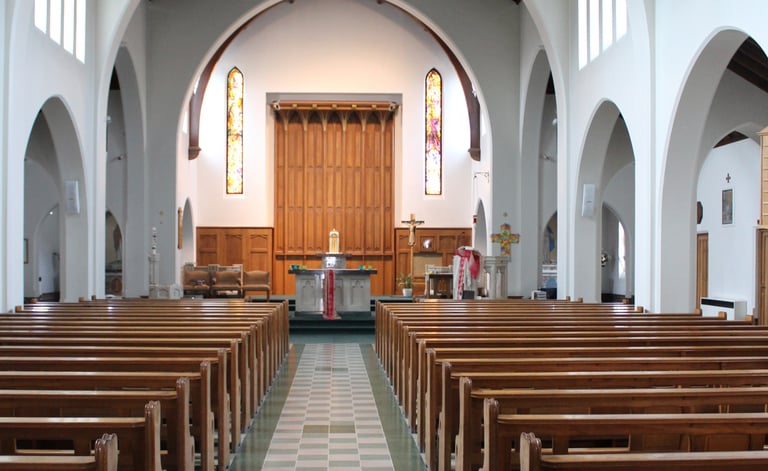

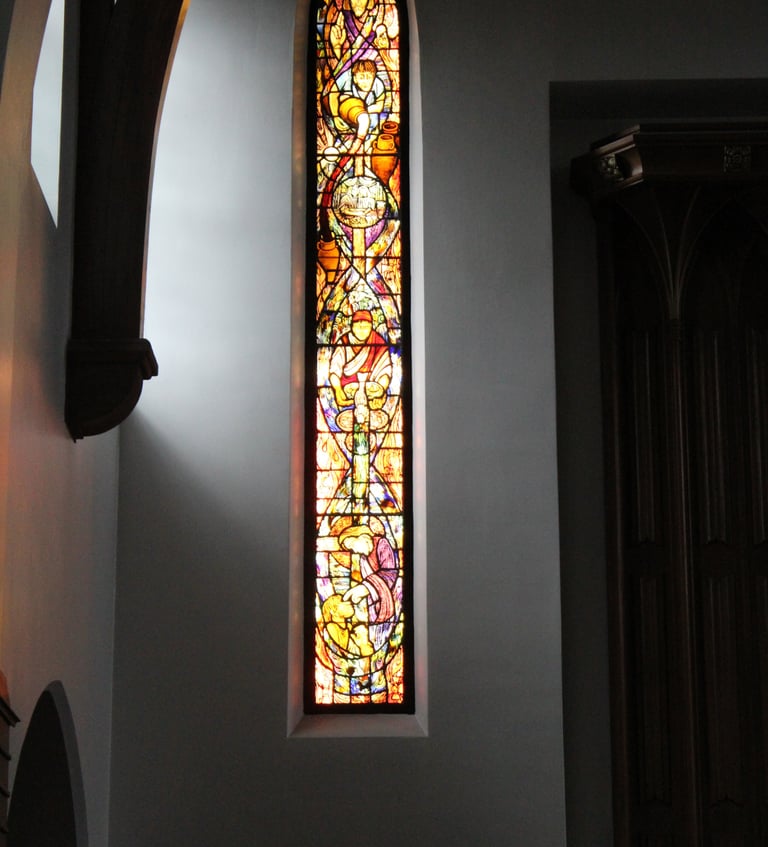

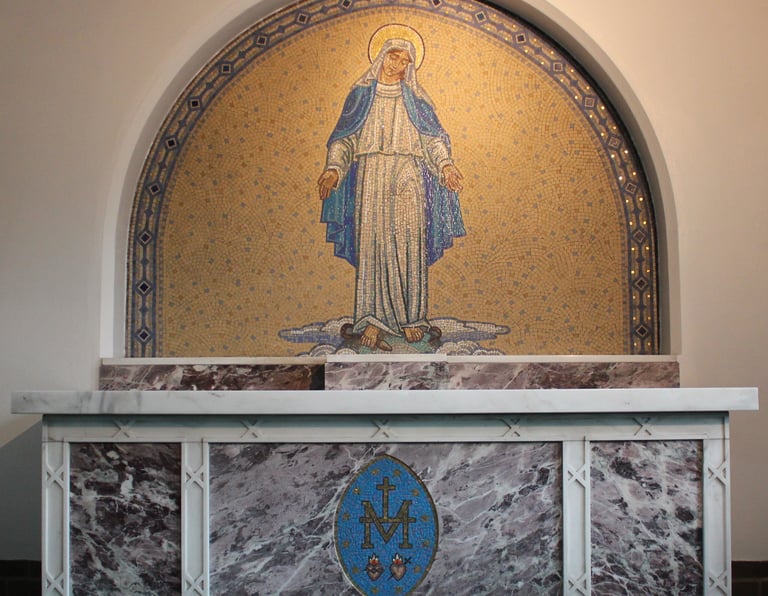


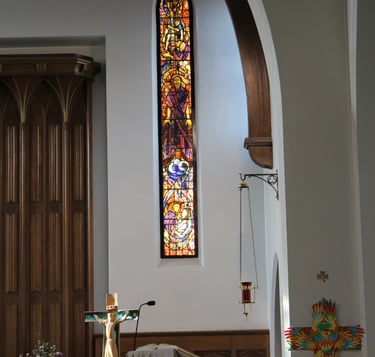
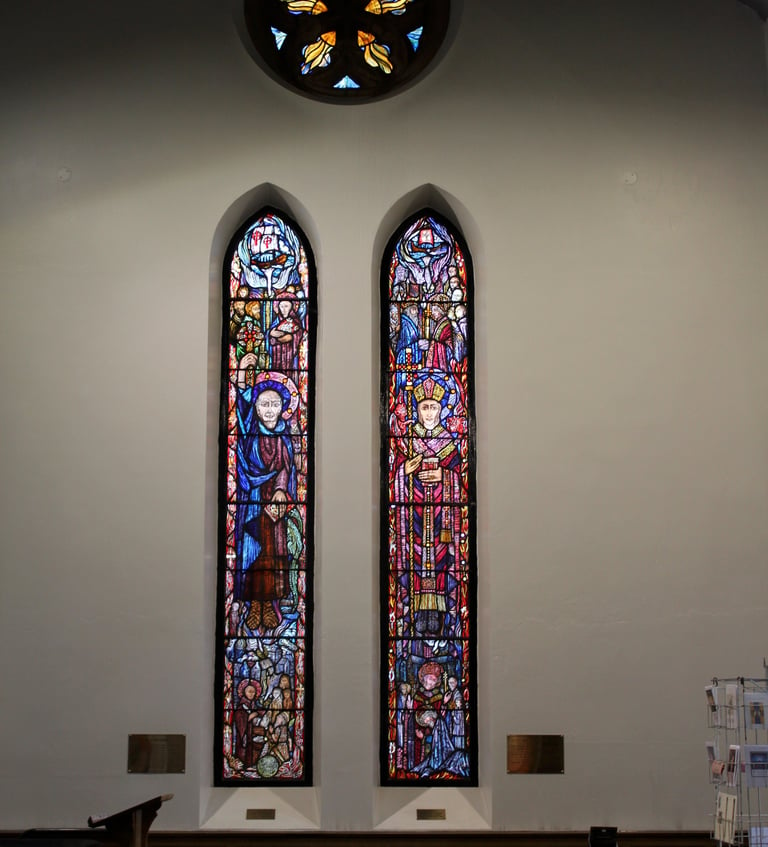

Our Lady of Lourdes, Leasowe
Gardenside, Leasowe CH46 2RR
The first Parish to be dedicated to Our Lady of Lourdes in the Shrewsbury Diocese came into being on Sunday, February 3rd, 1957, when the Parish Priest said the first Mass in the hall of the Birket Infants School. The Mass centre had been started some eighteen months previously by the English Martyrs' Clergy.
For the time being, Father O'Brien was given accommodation with the clergy of the English Martyrs, Wallasey, where Canon Coughlan was hospitality itself. The Parish was formed from both the English Martyrs, Wallasey and the Sacred Heart, Moreton, the lager slice coming from English Martyrs. In April 1957, a house was bought on the Leasowe estate for a temporary Presbytery, where daily mass was said and the Sanctuary lamp was lit.
Owing to the number of children in the parish, His Lordship thought it wise that priority should be given to a Primary School in our building programme. In view of the fact that a school building date could not be predicted, His Lordship decided we should go ahead with a Church and Presbytery and Arthur Farebrother and Partners, of Manchester, were commissioned to draw up plans.
A site of two and a half acres had been reserved for our purposes by the Local Authority, and negotiations were commenced for its purchase in May 1958, negotiations which proved to be a trial of patience. Finally, by the end of 1959 the land came into our possession for a sum of £ 3,000, except for a small strip of frontage which was acquired by March 1960. The builders Tysons Ltd, of Liverpool, moved onto the site and the great work began. Owing to the bad bearing quality of the land, extensive piling was necessary to a depth of 30 feet which added well over £ 7,000 to the estimated cost. His Lordship blessed and laid the Foundation Stone on Saturday October 5th.
Now it stands, a pleasing edifice built on classical lines, its tower looking out over the Irish Sea.
Extracts from the Diocesan Year Book for 1962
In 2010 the church was completely refurbished and a modern community centre established at the rear of the church. The Community Centre provides a valuable resource for the school and the local community.
To create a new liturgical space with full disabled access, the church was turned round to face the rear of the building. This has provided a modern worship space with dazzling natural light, highlighting the fine architectural features of the building.

